From the classroom to the front lines of the COVID-19 pandemic
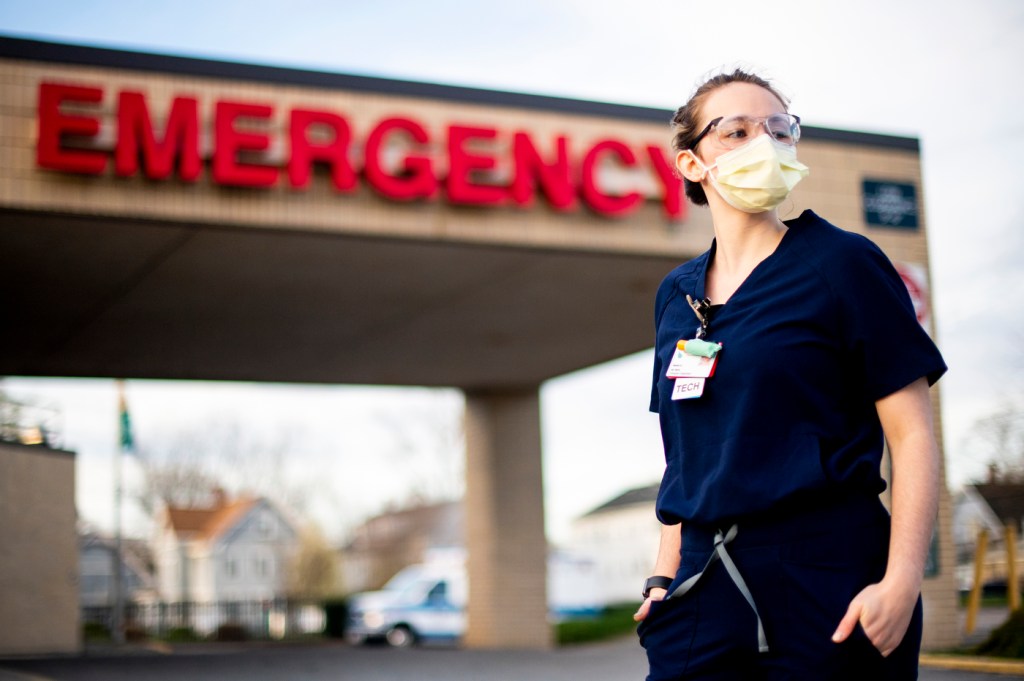
At the end of Alyson Dahlberg’s shift, which wraps up around 7 a.m., she can be found sitting, balancing on the driver’s seat of her car with her feet in a bucket. She’s removing her hospital shoes, which she just wore for the past 12 hours, and changing into her “normal” shoes before they ever touch the interior.
The bucket goes into the trunk, and her scrubs stay behind at the hospital, where they’re washed. Also being disinfected before she uses it again during her next shift is her designated N95 mask. It’ll be sent down to the autoclave, a machine that kills germs through high heat, and will be waiting for her in a labeled bag when she’s next scheduled to work.
The precautions don’t stop there. After Dahlberg, a nursing student at Northeastern, makes the hour-long drive home from Sturdy Memorial Hospital in Attleboro, Massachusetts, her first move is hopping in the shower and throwing her clothes in the washing machine.
She lives with her family, and as an emergency department technician, she’s well aware of the risks associated with being in proximity to COVID-19 patients and the potential for her to spread the virus. So, she does everything in her power to keep everything clean and her loved ones safe.
The volume of patients coming into the hospital coughing and exhibiting shortness of breath—symptoms of the novel coronavirus disease—causes a natural atmosphere of nervousness, she says.
But she finds the work exciting and meaningful.
“That’s what I like. I like staying very busy and not knowing what’s coming through the door. You never know what’s going to happen in your shift,” Dahlberg says of working in the emergency room, especially for the night shift, when there are fewer staff members and she has more hands-on duties. “It has that adrenaline associated with it.”
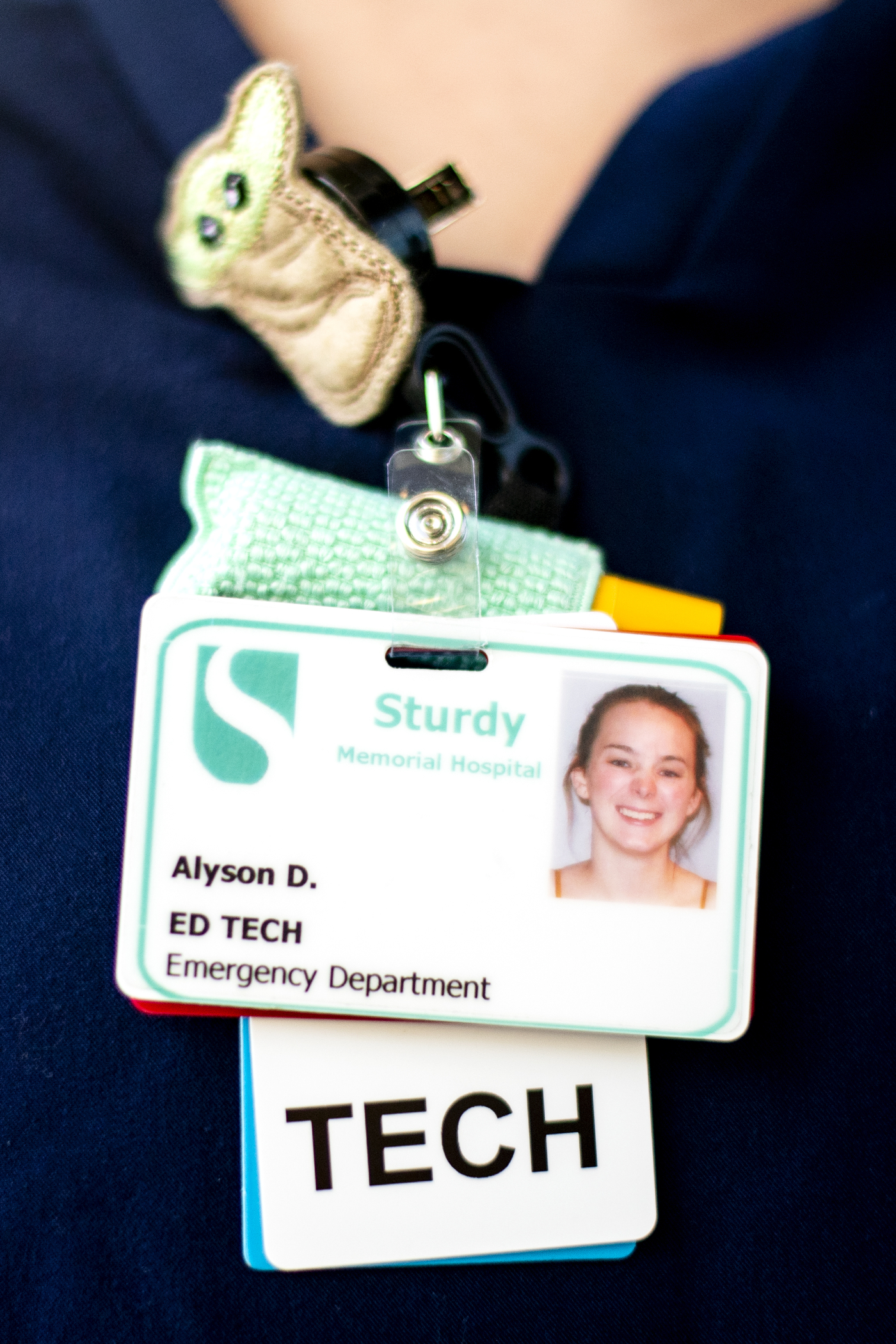
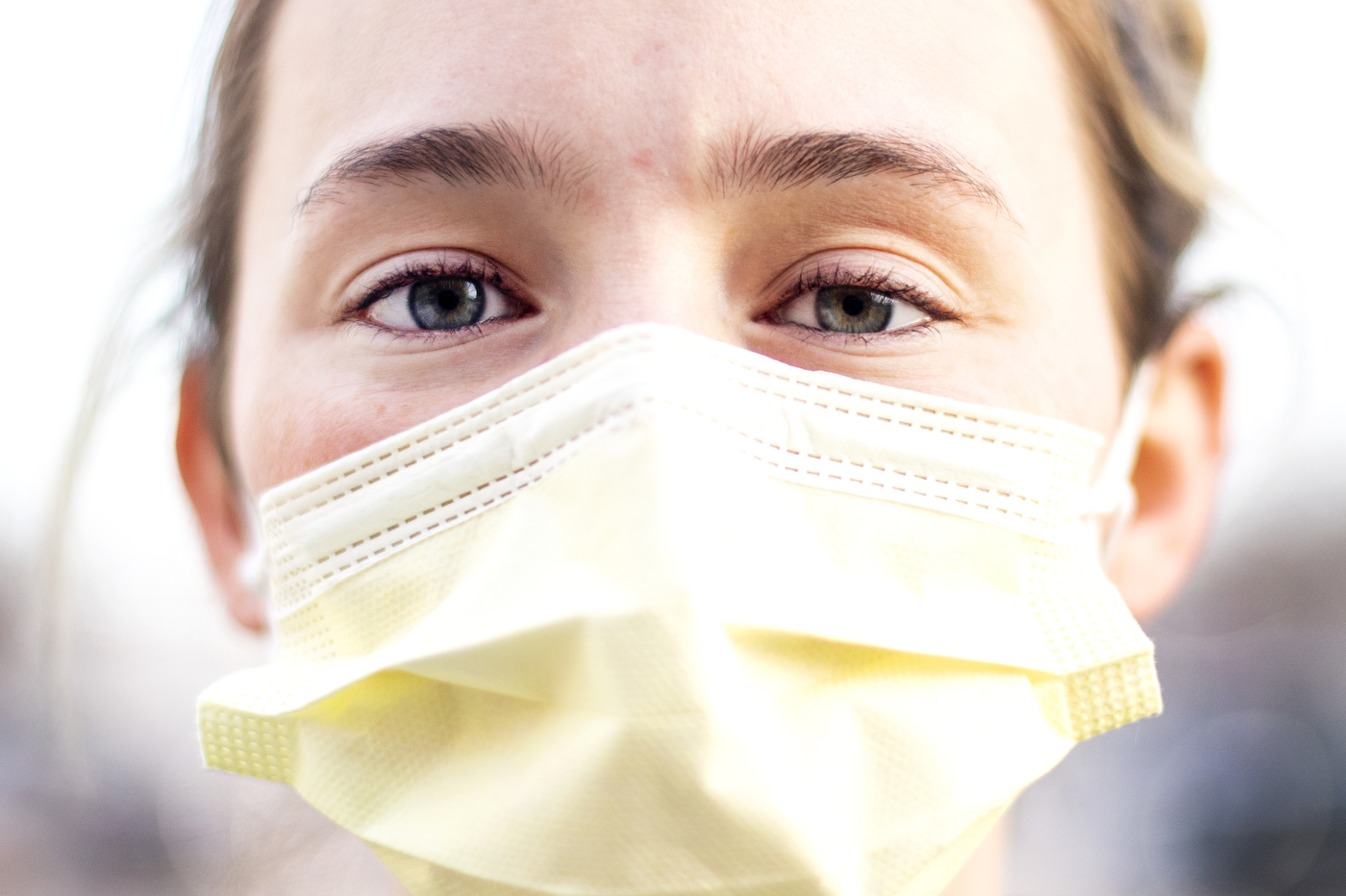
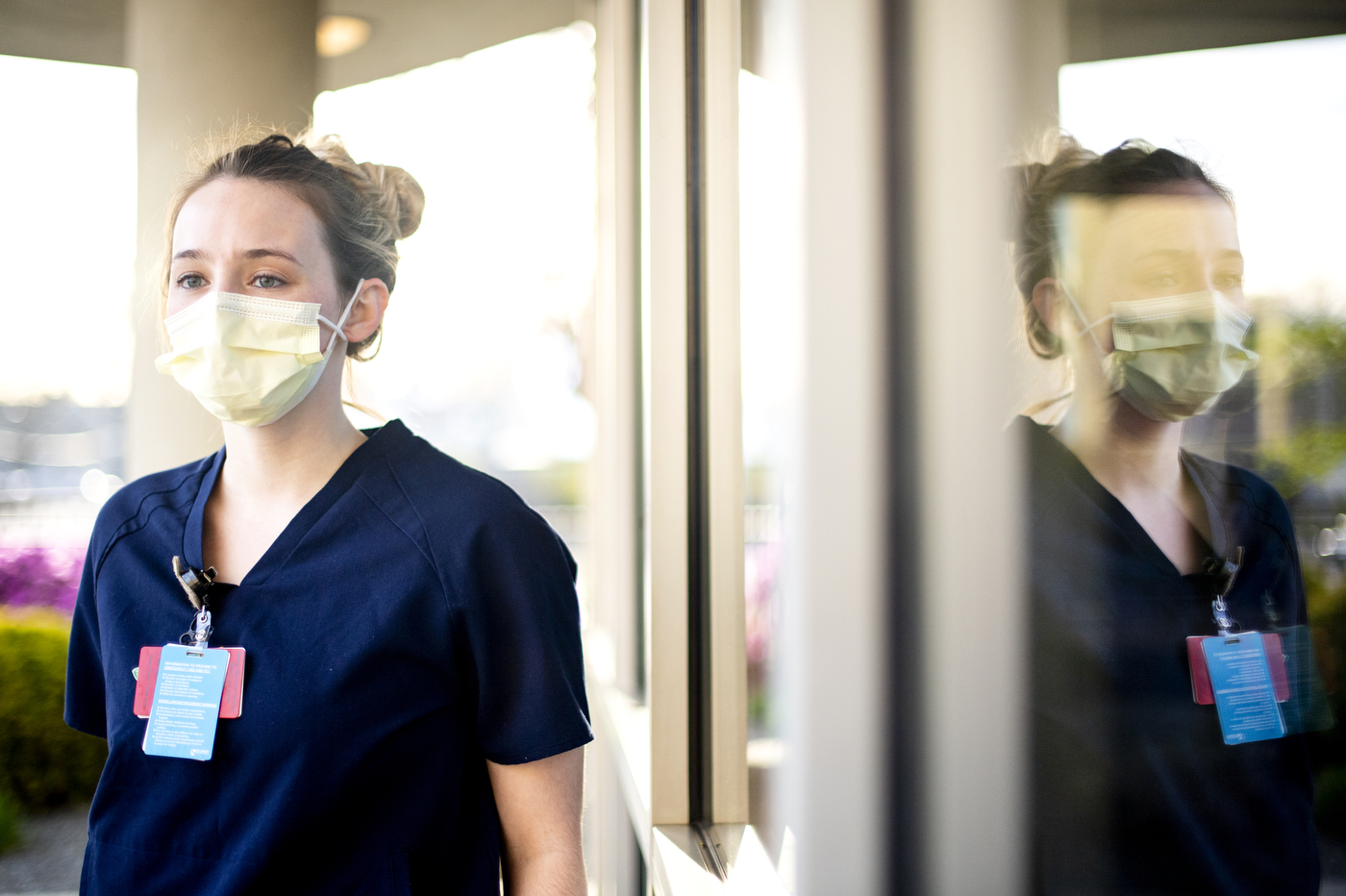
Dahlberg, an upbeat and charismatic 23-year-old, is set to graduate in May with hopes of becoming an emergency room nurse. But graduation is far from her mind now—working on the front lines of the COVID-19 pandemic has stolen the show.
She never expected that the job she’s been doing since August 2019 would change so rapidly over the course of what seemed like a few days as the coronavirus outbreak took hold.
Dahlberg largely has the same emergency department tech duties as before: taking patients’ vitals, doing triage upon arrival, and helping nurses do assessments, though it now comes with a far higher risk, considering how easily transmissible the coronavirus is and the growing number of patients exhibiting symptoms.
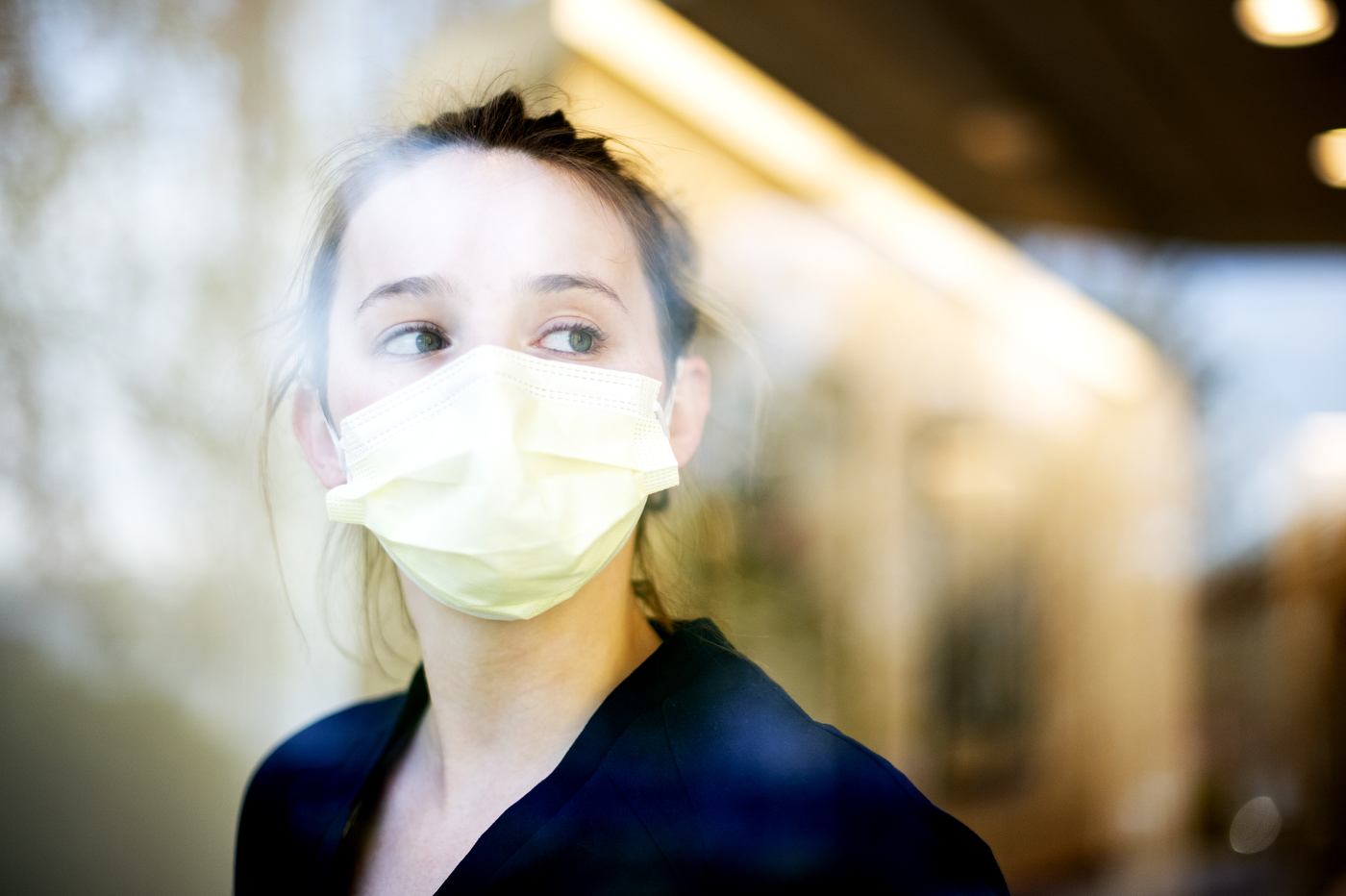
Dahlberg says she does feel protected by the precautions the hospital takes.
Everyone’s temperature is taken before entering the hospital; fever is one of the most prevalent early symptoms of COVID-19. Temperatures are taken as staff leave the hospital, as well. And although personal protective equipment is running low, the hospital still has enough for Dahlberg to wear a mask, gloves, and goggles during each shift.
As an emergency department tech, Dahlberg says, she rarely comes in contact with COVID-19 patients, but that doesn’t mean it can’t happen. The emergency room is now separated by temporary dividers into a “hot zone,” where all suspected or positive coronavirus patients enter, and the “cold zone,” for everyone else.
Most of the action these days takes place in the hot zone, where Dahlberg says it’s been busy. What was once just a regular wing of the emergency room, now serves the important purpose of containment.
From there, patients are evaluated and those who need medical care are admitted and taken to the designated floor for COVID-19 patients. If they are well enough not to need hospitalization, they are told to go home and self-quarantine.
Her supervisors and coworkers ensure that as a tech, Dahlberg doesn’t get exposed or come in contact with patients who’ve tested positive any more than necessary. Even when she might be working in the designated coronavirus wing and running around to get doctors and nurses what they need, she is able to stay out of the patient rooms for the most part. The rooms are sealed off to only those who are working in that zone and have a reason to enter, and those who are suspected to be positive.
The camaraderie felt with her fellow healthcare workers has made a difference in mitigating fears of infection.
“We’re apprehensive, but we’re also close-knit and we’ve come together even closer. We’re cheering each other on through it,” she says.
After seeing patients suffering firsthand, Dahlberg desperately wants people to know to take the virus seriously, to heed the social distancing rules and be aware of their surroundings.
All things considered, she says she’s not scared.
“I just want to help people however I can,” Dahlberg says. “It’s good to know I can do something during this.”
For media inquiries, please contact media@northeastern.edu.





